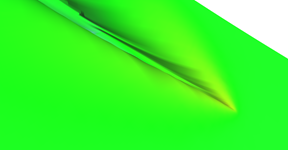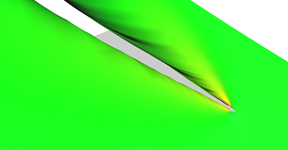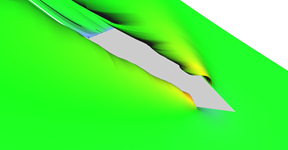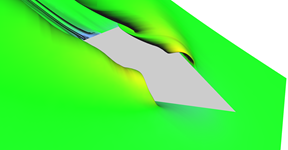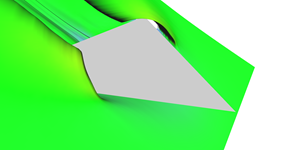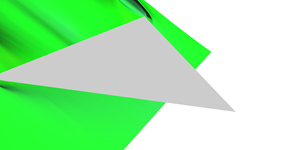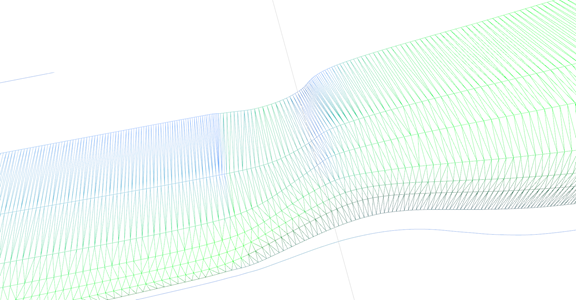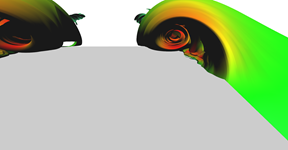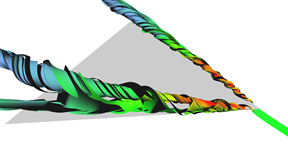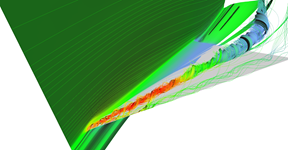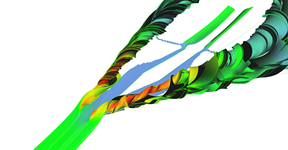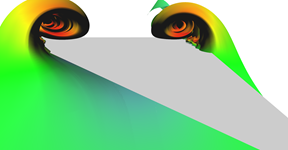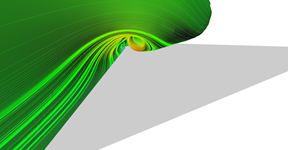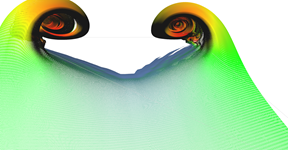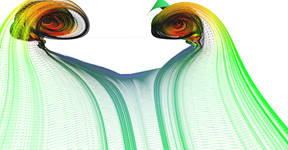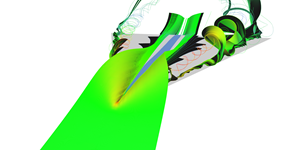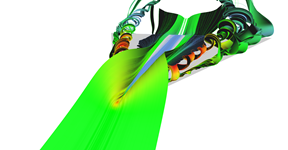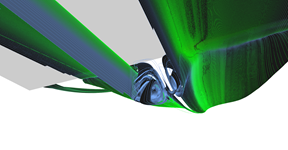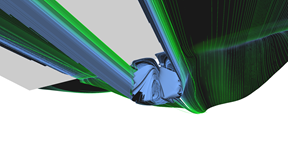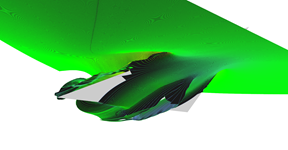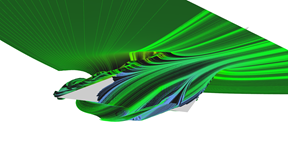April 2013
Real time visualization of 3D vector field with CUDA
6 Visualization using stream surfaces
Code listing 1: Simplified CUDA kernel for triangulation of stream line pair to stream surface.
1 2 3 4 5 6 7 8 9 10 11 12 13 14 15 16 17 18 19 20 21 22 23 24 25 26 27 28 29 30 31 32 33 34 35 36 37 38 39 40 41 42 43 44 45 46 47 48 49 50 51 52 53 54 55 56 57 58 59 60 61 62 63 64 65 66 67 68 69 | __global__ void computeStreamSurfaceKernel(uint2* linePairs, uint linePairsCount, float3* lineVertices, uint verticesPerLine, uint* lineLengths, uint3* outFaces, uint* outFacesCounts, float3* outNormals) { uint id = __umul24(blockIdx.x, blockDim.x) + threadIdx.x; if (id >= linePairsCount) { return; } uint2 currPair = linePairs[id]; uint2 lengths = make_uint2(lineLengths[currPair.x], lineLengths[currPair.y]); if (lengths.x < 2 || lengths.y < 2) { outFacesCounts[id] = 0; return; // Lines too short for triangulation. } uint line1Offset = currPair.x * verticesPerLine; uint line2Offset = currPair.y * verticesPerLine; float3* line1 = lineVertices + line1Offset; float3* line2 = lineVertices + line2Offset; float3* normals1 = outNormals + line1Offset; float3* normals2 = outNormals + line2Offset; uint maxFaces = verticesPerLine * 2 - 2; uint3* faces = outFaces + id * maxFaces; uint2 currIndex = make_uint2(0, 0); uint faceId; for (faceId = 0; faceId < maxFaces; ++faceId) { if (currIndex.x + 1 >= lengths.x || currIndex.y + 1 >= lengths.y) { break; // Reached the end of stream line. } float dist1 = (currIndex.x + 1 < lengths.x) ? length(line1[currIndex.x + 1] - line2[currIndex.y]) : (1.0f / 0.0f); // Infinity. float dist2 = (currIndex.y + 1 < lengths.y) ? length(line1[currIndex.x] - line2[currIndex.y + 1]) : (1.0f / 0.0f); // Infinity. uint newVertexIndex; float3 newVertex; uint2 nextIndex; if (dist1 <= dist2) { newVertexIndex = line1Offset + currIndex.x + 1; newVertex = line1[currIndex.x + 1]; nextIndex = make_uint2(currIndex.x + 1, currIndex.y); } else if (dist2 < dist1) { newVertexIndex = line2Offset + currIndex.y + 1; newVertex = line2[currIndex.y + 1]; nextIndex = make_uint2(currIndex.x, currIndex.y + 1); } faces[faceId] = make_uint3(line1Offset + currIndex.x, line2Offset + currIndex.y, newVertexIndex); float3 normal = cross(line1[currIndex.x] - line2[currIndex.y], newVertex - line2[currIndex.y]); normal = normalize(normal); normals1[currIndex.x] = normal; normals2[currIndex.y] = normal; currIndex = nextIndex; } outFacesCounts[id] = faceId; } |
